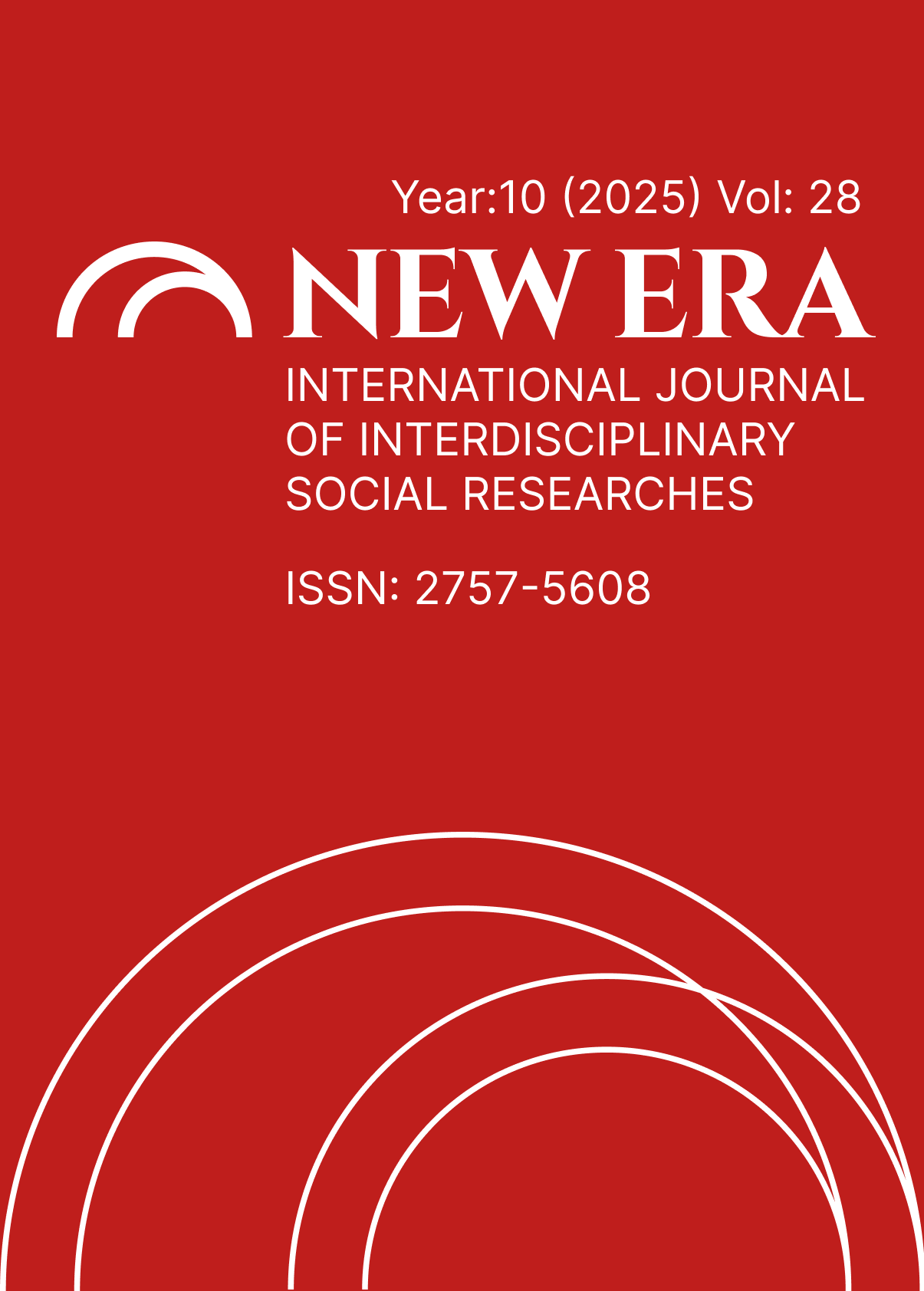ANALYSIS OF EMERGENCY EVACUATION FUNCTIONS USING THE PATHFINDER SİMULATION PROGRAM
DOI:
https://doi.org/10.5281/zenodo.15315114Abstract
This study analyzes the effectiveness of evacuation processes during emergency situations in educational buildings. By utilizing the Pathfinder Simulation Program, simulations were conducted to identify factors influencing evacuation times, and evacuation performance was thoroughly evaluated under different student numbers and building conditions. The key variables affecting evacuation time, such as increased student population, the location and number of exit doors, floor height, flow density, and building design, were examined. Based on the simulation results, mathematical models were developed to predict evacuation time and were compared with simulation data to analyze error margins. The main findings of the study indicate that evacuation times significantly increase in buildings with a single emergency exit and that adding a fire escape could reduce the total evacuation time by 24%. Additionally, high occupant density within the building was found to cause congestion at certain points, negatively affecting the evacuation process. The mathematical model developed in this study provides a reliable alternative for researchers without access to simulation software. The results contribute significantly to improving emergency evacuation strategies in educational buildings and optimizing safe evacuation plans.
References
Drager K. H. ve Lovas G. G., 1993: Objectives of Modelling Evacuation from Buildings during Accidents: Some Path-model Scenarios, Journal of Contingencies and Crisis Management,
Atalay, S, (2010), Acil Durum Hizmet Grupları Verilerinin Standartlaştırılması ve TABİS’e Uygun Hale Getirilmesi. İstanbul Teknik Üniversitesi Fen Bilimleri Enstitüsü, Yüksek Lisans Tezi, İstanbul
Thunderhead Engineering Consultants, Inc. (2019). Erişim Tarihi Mart 2021. https://www.thunderheadeng.com/pathfinder/pathfinder-features/
Üreden, B. (2021) Simülasyon Modeli Kullanarak Bir Üniversitede Acil Durum Tahliye Planı Oluşturulması. Sağlık Bilimleri Enstitüsü Yüksek Lisans Tezi, İstanbul
Topraklı, A. Sedihemaiti, S. & Ağraz, G . (2019). Osmanlı klasik dönem tipi modern camilerin tahliye problemine ilişkin değerlendirme. Gazi Üniersitesi Mühendislik Mimarlık Fakültesi Dergisi, 34 (4) , 2261-2270. doi: 10.17341/gazimmfd.490086
Karasakal N.K. (2018). Üniversite öğrencilerinin afet ve acil durum yönetimi konusundaki farkındalıkları: Kandıra myo örneği. Organizasyon ve yönetim bilimleri dergisi. Cilt 10, Sayı 1, ISSN: 1309 – 80
Kaçmaz, M. (2014) İlkokul Müdürlerinin Acil Durum Yönetimine İlişkin Görüşleri (Aydın Merkez İlçe Örneği) (Yayınlanmamış Merkez İlçe Örneği) Muğla Sıtkı Koçman Üniversitesi, Muğla
Açıklamalı afet yönetimi terimleri sözlüğü (2019). Erişim Tarihi Mart 2021. https://www.afad.gov.tr/aciklamali-afet-yonetimi-terimleri-sozlugu
Abulnour, A.H. (2014). Towards efficent disaster Management in Egypt. HBRC Journal, 10, 117-126
Değerliyurt, M. (2013), Antakya’da Doğal Afet Risk Analizi ve Yönetimi. İstanbul Üniversitesi Sosyal Bilimler Enstitüsü, Doktora Tezi, İstanbul
Deniz, Ş.E. (2012), Antalya İli Afet Riskleri ve Afet Yönetimi Konusu Üzerine Bir Araştırma. Akdeniz Üniversitesi Fen Bilimleri Enstitüsü, Yüksek Lisans Tezi, Antalya
Çelik, H.İ., Usta, G., Yılmaz, G. & Yakupoğlu, (2020). M. Türkiye’de yaşanan teknolojik afetler (2000 – 2020) üzerine bir değerlendirme. AÇÜ Uluslararası Sosyal Bilimler Dergisi. Cilt 6; Sayı 2; SS 49-57 doi:10.22466/acusbd.776580
Müller, G. (1998) Kriterien für Evakuierungsempfehlungen bei Chemikalienfreisetzungen, Zivilschutz-Forschung, Neue Folge Band 32, Bundesamt für Zivilschutz, Bonn.
Prendke, W.-D. Schröder, H., (2005). Lexikon der Feuerwehr. Kohlhammer Verlag, Stuttgart,3. Aufl.
Sieber, G.M, (1986) Panik. vfdb-Zeitschrift Forschung und Technik im Brandschutz 2, s. 39-41
Ploog, D., Clausen, L. (1997). Katastrophenmedizin.Leitfaden für die ärztliche Versorgung im Katastrophenfall.Bundesamt für Zivilschutz (Hrsg.), 4. überarbeitete Auflage, Bonn.
Öcal, A. Çakır U. Özelmacı Ş. (2016), İlkokul ve Ortaokul Ders Programlarında Afetten Korunma ve Güvenli Yaşam Alan Eğitimi Araştırmaları Dergisi (ALEG) Cilt 2, Sayı 2, s.71-83.
Schäfer, C.; Künzer, L.; Zinke, R., (2013). Integration und Modellierung von menschlichen Faktoren für die Evakuierung von U-Bahn-Systemen, Universitaet Paderborn.
Raphael, B. 2005: Crowds and Other Collectives: Complexities of Human Behaviors in Mass Emergencies. Psychiatry, 68, (2), 115-120.
Kelley, H. H, Condry, J. C. Jr., Dahlke, A. E & Hill, A. H., 1965. Collective behavior in a simulated panic situation. Journal of Experimental Social Psychology 1, 20–54.
Predtechenskii V. M., Milinskii A. I., 1978. Planning for Foot Traffic Flow in Buildings, Amerind Publishing, Co. Pvt. Ltd., New Delhi.
Kendik E., 1983. Determination of the Evacuation Time Pertinent to the Projected Area Factor in the Event of Total Evacuation of High-Rise Office Buildings via Staircases, Fire Safety Journal, 5, 112–232.
Thompson P, Marchant E. 1995’a. A Computer Model for the Evacuation of Large Building Population, Fire Safety Journal, 24,131–148.
Ando K., Ota H., Oki T., 1988. Forecasting the Flow of People, RRR, Railway Res Review, 45, 8–14.
Shi L., Xie Q., Cheng X., Chen L., Zhou Y., Zhang R., 2009. Developing a database for emergency evacuation model, Building and Environment, 44, 1724–1729.
Downloads
Published
How to Cite
Issue
Section
License
Copyright (c) 2025 NEW ERA INTERNATIONAL JOURNAL OF INTERDISCIPLINARY SOCIAL RESEARCHES

This work is licensed under a Creative Commons Attribution-NonCommercial 4.0 International License.


